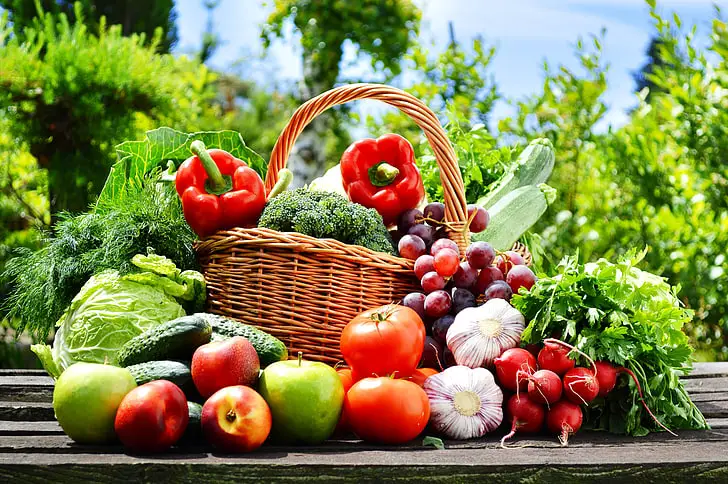
Discover the joy of creating a sustainable kitchen with our handy guide. Learn about eco-friendly designs, waste management, and more for a greener home.
Imagine stepping into a space that not only lets you whip up delicious meals but also contributes to the well-being of our planet.
Yes, we’re talking about creating a sustainable kitchen! It’s a place where eco-friendly practices, energy efficiency, and mindful choices come together to form a harmonious and green culinary haven.
Ready to embark on this exciting journey? Let’s dive in!
Creating a Sustainable Kitchen
Welcome to the world of sustainable kitchens, where every meal cooked is a step towards a healthier planet.
In this journey, we’ll explore how to transform your kitchen into an eco-friendly space without compromising on style or functionality.
From planning and design to cooking practices, product choices, waste management, water conservation, and even food selection, we’ve got it all covered.
So, if you’re ready to create a kitchen that’s not just about good food but also about good practices, let’s get started!
Definition of a Sustainable Kitchen
A sustainable kitchen, you ask? Well, it’s more than just a room with eco-friendly appliances.
It’s a space where every element, from the design and materials used to the cooking practices and waste management, is geared towards reducing environmental impact.
It’s about creating a kitchen that’s not only efficient and functional but also kind to our planet.
It’s about making conscious choices, like opting for energy-saving sustainable appliances, using biodegradable products, and even choosing sustainably sourced foods.
In essence, a sustainable kitchen is a testament to living a green lifestyle right in the heart of your home.
Importance of Having a Sustainable Kitchen
Now, you might wonder, why go through all this effort? The answer is simple. Because our planet deserves it.
Every choice we make in our kitchen has an environmental impact, from the energy we use to cook our meals to the waste we generate.
By creating a sustainable kitchen, we’re reducing this impact. But that’s not all.
A sustainable kitchen can also help us save money in the long run with lower energy and water bills.
Plus, it can contribute to a healthier lifestyle by encouraging us to make mindful food choices.
So, having a sustainable kitchen is not just good for the planet, it’s good for us too!
Planning for a Sustainable Kitchen
Ready to take the leap and transform your kitchen into an eco-friendly powerhouse? Fantastic!
But before we start picking out energy-efficient sustainable kitchen appliances or biodegradable products, let’s take a moment to plan.
Just like any great recipe, creating a sustainable kitchen requires a well-thought-out blueprint.
It’s about understanding your space, your needs, and your impact. So, let’s roll up our sleeves and dive into the exciting world of planning for a sustainable kitchen.
Trust me, a little bit of planning now will make a world of difference in your sustainable kitchen journey!
Importance of Planning
Planning, my friends, is the secret ingredient to a successful sustainable greener kitchen.
It’s like a roadmap guiding you toward your eco-friendly goals.
Without a plan, we might end up with a kitchen that’s only partially sustainable or, worse, one that misses the mark entirely.
Planning helps us identify what changes are needed, prioritize them, and implement them effectively.
It ensures that every aspect of our kitchen, from the design and appliances to the cooking practices and waste management, aligns with our sustainability goals.
So, let’s embrace planning as our first step towards a greener kitchen.
Factors to Consider
When planning for a sustainable kitchen, there are several key factors to consider.
First, think about your space. What’s the size of your kitchen? What’s the layout?
This will influence the design and the appliances you choose. Next, consider your cooking habits.
Are you just updating your present kitchen, doing a total remodel, or starting from scratch?
Do you cook often? What type of meals do you usually prepare?
This can guide your choice of energy-efficient appliances and cooking practices.
Also, think about your waste generation and how you can reduce it. Can you set up a composting system? Can you recycle?
Lastly, consider your budget. Remember, creating a sustainable kitchen is a journey, and it’s okay to make changes gradually.
The goal is to make the best eco-friendly choices within our means. So, let’s keep these factors in mind as we embark on this exciting journey!
Sustainable Kitchen Design
Designing a kitchen is always exciting, isn’t it? But when it’s a sustainable kitchen we’re talking about, the excitement doubles!
It’s like crafting a masterpiece where every element not only looks good but also does good for our planet.
From energy-efficient appliances to sustainable materials and even the way we use natural light and ventilation, every aspect of the design plays a crucial role.
So, are you ready to put on your designer hat and dive into the world of sustainable kitchen design? Let’s get started!
Choosing the Right Floorplan
The floorplan of your kitchen plays a significant role in its functionality and sustainability of an eco-friendly kitchen remodel.
It’s all about creating a space that’s efficient, comfortable, and suits your cooking style. Let’s explore a few popular kitchen floorplans:
L-Shaped Kitchen: This layout is great for small to medium-sized kitchens. It utilizes two adjacent walls to create an L shape, providing a compact and efficient workspace.
It’s perfect for one-cook kitchens and can easily accommodate an open-plan living area.
C-Shaped Kitchen: Also known as a U-shaped kitchen, this layout uses three walls for the kitchen workspace.
It offers plenty of counter space and storage, making it ideal for those who love to cook and need room for all their culinary adventures.
It’s a great layout for multiple cooks.
Kitchen with a Central Island: This layout is a favorite in many modern homes.
The central island provides extra workspace, storage, and a casual dining area.
It’s a versatile option that can enhance both the functionality and social aspect of your kitchen.
Remember, the key to a sustainable kitchen is efficiency. The less time and energy you spend moving around, the more sustainable your kitchen becomes.
So, choose a layout that makes your kitchen tasks as efficient as possible.
Sustainable Cooking Practices
Let’s turn the heat up a notch and talk about sustainable cooking practices.
It’s not just about what we cook, but how we cook that makes a difference.
From the energy we use to the waste we generate, our cooking habits have a significant impact on our kitchen’s sustainability.
But don’t worry, making a few simple changes can transform your cooking routine into a green culinary experience.
So, grab your apron, and let’s explore how we can cook up a storm while keeping our planet in mind!
Energy-Efficient Cooking Methods
Cooking is an art, and like any great artist, we can adapt and evolve our techniques.
In the case of a sustainable kitchen, this means adopting energy-efficient cooking methods.
For instance, using a pressure cooker or an Instant Pot can significantly reduce cooking time and energy use.
Similarly, using the right-sized pots and pans on the stove burners can prevent heat loss.
And let’s not forget about batch cooking or using the oven efficiently. By cooking larger quantities or using all the oven racks, we can make the most of the energy used.
So, let’s get creative and experiment with these energy-saving cooking techniques!
Reducing Food Waste
Food waste is a big challenge in many kitchens, but it’s one we can overcome with a little mindfulness.
It starts with smart shopping and buying only what we need and using what we buy.
Planning our meals and using a shopping list can help with this.
Then, it’s about storing food properly to extend its life and using leftovers creatively.
And for the unavoidable food scraps like vegetable peelings or coffee grounds? Composting is the answer.
It’s a great way to return nutrients to the soil and reduce the waste that goes to the landfill.
So, let’s make reducing food waste a key ingredient in our sustainable cooking practices!
Sustainable Kitchen Products
Let’s talk about the unsung heroes of a sustainable kitchen and the products we use.
From the pots and pans to the cleaning supplies, every product in our kitchen has an environmental footprint.
But the good news is, there are plenty of eco-friendly alternatives out there!
These sustainable kitchen products not only help us reduce our environmental impact but also add a touch of green to our daily kitchen routines.
So, are you ready to discover the world of sustainable kitchen products? Let’s dive in!
Reusable Kitchen Products
In our quest for a sustainable kitchen, reusable products are our best friends.
They help us reduce waste and save money in the long run. Think about all the single-use items in your kitchen like plastic wrap, paper towels, disposable plates, and cutlery.
Now, imagine replacing them with reusable alternatives. Cloth napkins instead of paper towels, beeswax wraps instead of plastic wrap, and durable plates and cutlery that can be used again and again.
And let’s not forget about reusable shopping bags and produce bags for our grocery shopping.
By choosing reusable, we’re saying no to unnecessary waste and yes to sustainability!
Biodegradable Kitchen Products
Now, let’s turn our attention to biodegradable kitchen products.
These are products that can break down naturally without causing harm to the environment.
For instance, consider using biodegradable dish soap and cleaning supplies. Not only do they reduce water pollution, but they also lessen our reliance on harsh chemicals.
And what about kitchen sponges? Traditional sponges can take years to decompose in a landfill. But a biodegradable sponge or a dish brush with replaceable heads can be a more eco-friendly choice.
Remember, every product we choose for our kitchen is a vote for the kind of world we want to live in.
So, let’s vote for a greener world with biodegradable kitchen products!
Waste Management in the Kitchen
Let’s face it, kitchens can generate quite a bit of waste. But what if I told you that managing this waste could be a key step in our sustainable kitchen journey?
From composting food scraps to recycling packaging, there are numerous ways to reduce the waste that ends up in landfills.
It’s all about rethinking our waste as resources and finding ways to give them a second life.
So, are you ready to roll up your sleeves and tackle waste management in your kitchen? Let’s get started!
Composting
Composting is like magic for waste management in the kitchen.
It turns your food scraps into nutrient-rich soil, perfect for your garden or houseplants.
Think about all the vegetable peelings, coffee grounds, and eggshells that usually end up in the trash.
With composting, these can be transformed into something valuable. And the best part?
Composting can be done right at home, whether you have a backyard or live in an apartment.
There are many compost bins and systems available that can fit your space and lifestyle.
So, let’s turn our food waste into black gold with composting!
Recycling
Next up on our waste management journey is recycling.
While it’s best to reduce and reuse first, recycling is a great way to manage the waste that’s left.
Many items in the kitchen can be recycled, from glass jars and metal cans to cardboard boxes and certain plastics.
It’s important to check your local recycling guidelines as they can vary from place to place.
And remember, proper preparation is key to successful recycling.
This means rinsing containers and sorting them correctly. So, let’s give our waste a new lease on life with recycling!
Water Conservation in the Kitchen
Water is a precious resource, and in the kitchen, it’s used in abundance.
From cooking and cleaning to running appliances, water is involved in almost every kitchen task.
But what if we could make our kitchens a place of water conservation?
It’s easier than you might think! With a few mindful practices and the right appliances, we can significantly reduce our water usage.
So, let’s dive into the world of water conservation in the kitchen and discover how we can make every drop count!
Efficient Dishwashing Practices
Dishwashing can be a major water guzzler in the kitchen, but with efficient practices, we can change that.
For starters, let’s say goodbye to leaving the tap running while we scrub.
Instead, fill one sink or a basin with warm soapy water for washing and another with cool clear water for rinsing.
If you’re using a dishwasher, always wait until you have a full load before running it.
And choose the eco mode if your dishwasher has one. It uses less water and energy but is just as effective.
So, let’s make efficient dishwashing practices a part of our kitchen routine!
Water-Saving Appliances
When it comes to water conservation, the appliances we choose can make a big difference.
Consider investing in a water-efficient dishwasher and a low-flow faucet.
These appliances are designed to use less water without compromising performance.
A water-efficient dishwasher can save a significant amount of water compared to hand washing.
And a low-flow faucet reduces the water flow while maintaining enough pressure for your kitchen tasks.
Remember, every drop of water saved is a step towards a more sustainable kitchen.
So, let’s make water-saving appliances a key part of our kitchen design!
Sustainable Food Choices
Let’s shift our focus from the kitchen itself to what goes on our plates.
The food we choose to cook and eat plays a significant role in our kitchen’s sustainability.
From where it comes from to how it’s grown, every food choice we make has an impact.
But don’t worry, making sustainable food choices doesn’t mean you have to compromise on taste or variety.
In fact, it can open up a whole new world of flavors and ingredients.
So, are you ready to explore the realm of sustainable food choices? Let’s get cooking!
Organic and Locally Sourced Food
When it comes to sustainable food choices, organic and locally sourced food are the way to go.
Organic food is grown without synthetic pesticides and fertilizers, making it kinder to the environment.
It’s also often richer in nutrients, making it a healthy choice for us.
Then, there’s locally sourced food. By choosing to buy locally, we’re reducing the carbon footprint associated with transporting food from far-off places.
Plus, it’s a great way to support local farmers and the local economy.
So, next time you’re at the grocery store or the farmers market, look for organic and locally sourced options.
It’s a simple choice with big benefits!
Plant-Based Diet
Now, let’s talk about a plant-based diet. This doesn’t necessarily mean becoming a vegetarian or a vegan (unless you want to!).
It’s about making plants the star of your meals. Why? Because producing plant-based foods generally requires less water, and less land, and emits fewer greenhouse gases compared to animal-based foods.
Plus, a plant-based diet can be incredibly delicious and diverse, from hearty lentil stews to refreshing vegetable salads.
So, why not try incorporating more plant-based meals into your cooking repertoire?
Your taste buds, your health, and the planet will thank you!
Creating a Sustainable Kitchen FAQs
Got questions about creating a sustainable kitchen? You’re not alone! It’s a journey filled with discoveries, and it’s natural to have questions along the way.
That’s why we’ve put together this FAQ section. From understanding what makes a kitchen sustainable to tips on eco-friendly design, we’ve got you covered.
So, let’s dive into some of the most frequently asked questions about sustainable kitchens!
Q: What makes a sustainable kitchen?
A: A sustainable kitchen is one that reduces its environmental impact through energy-efficient appliances, sustainable design, waste reduction, water conservation, and sustainable food choices.
It’s about creating a space that’s not only functional and efficient but also kind to our planet.
Q: How to design an eco kitchen?
A: Designing an eco kitchen involves choosing energy-efficient appliances, using sustainable materials for countertops and cabinets, maximizing natural light and ventilation, and considering the layout for efficiency.
It’s also about planning for waste management and water conservation. Remember, every choice you make in the design process can contribute to the sustainability of your kitchen.
Q: What should be the ideal components of an eco-friendly kitchen?
A: An eco-friendly kitchen should ideally include energy-efficient appliances, sustainable or recycled materials for countertops and sustainable kitchen cabinets, a system for waste management like composting and recycling, water-saving appliances and practices, and a focus on sustainable food choices.
It’s also beneficial to incorporate natural light and ventilation into the design.
Q: What can a chef do to embrace a sustainable kitchen?
A: A chef can embrace sustainability in commercial kitchens in many ways.
This can include using energy-efficient cooking methods, reducing food waste, choosing organic and locally sourced ingredients, and promoting a plant-based diet.
Additionally, they can advocate for and practice efficient water use and proper waste management.
Remember, sustainability in the kitchen is as much about how we cook as it is about where we cook.
Creating a Sustainable Kitchen Final Thoughts
As we come to the end of our journey in creating a sustainable kitchen, it’s time to reflect on what we’ve learned.
But remember, this isn’t the end. It’s just the beginning of a lifelong journey towards a more sustainable lifestyle.
From planning and design to cooking practices and waste management, every step we’ve discussed is a step towards a greener kitchen.
So, are you ready to take these learnings and start your own sustainable kitchen journey? Let’s wrap things up and get you started!
Recap of the Main Points
• We’ve covered a lot of ground in our journey to create a sustainable kitchen.
• We started with understanding what a sustainable kitchen is and why it’s important.
• We then delved into the planning process, considering factors like space, cooking habits, waste generation, and budget.
• We explored sustainable kitchen design, focusing on energy-efficient appliances, sustainable materials, and the use of natural light and ventilation.
• We discussed sustainable cooking practices, including energy-efficient methods and reducing food waste.
• We also highlighted the role of sustainable kitchen products, waste management, and water conservation.
• And finally, we talked about making sustainable food choices, focusing on organic and locally sourced food and a plant-based diet.
Encouragement for the Reader to Start Creating Their Sustainable Kitchen
Now, it’s your turn to take these insights and start creating your own sustainable kitchen.
Remember, it’s not about making all the changes at once. It’s about starting where you are and making one sustainable choice at a time.
Every little change, every small step you take, contributes to a more sustainable kitchen and a healthier planet.
So, don’t wait for the perfect moment. Start today, start now.
Your journey towards a sustainable kitchen is a journey towards a greener, healthier life.
And trust me, it’s a journey worth embarking on!
Read more: How to Reduce Food Waste at Home 7 Easy Tips






